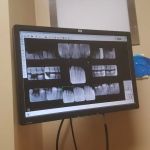What is Dental Bonding and When Should You Consider It?
Dental bonding is a versatile cosmetic dental procedure that can address a variety of dental issues, from minor chips and cracks to more significant cosmetic imperfections. If you're looking for a way to improve the appearance of your teeth without undergoing invasive treatments, dental bonding might be the ideal solution. This article will explore what dental bonding is, how it works, and when you should consider it as an option for your smile.
1. Understanding Dental Bonding
Dental bonding is a procedure in which a tooth-colored resin is applied to the teeth to correct imperfections, enhance their appearance, or protect them from further damage. The resin is moldable, allowing your dentist to shape it to fit the contours of your teeth. Once applied, the resin is hardened using a special curing light, bonding the material to the tooth surface.
1.1 The Process of Dental Bonding
The dental bonding process is relatively simple and can be completed in a single visit. Here’s how it typically works:
- First, your dentist will clean and prepare the surface of the tooth to ensure the bonding material adheres well.
- Next, a tooth-colored resin is applied to the tooth. The dentist will carefully mold it to match the natural contours of your teeth.
- After shaping the resin, a special light is used to harden it, ensuring the bonding material stays in place.
- Finally, the dentist will polish the bonded area, smoothing out any rough edges to create a natural-looking finish.
The entire procedure typically takes 30 minutes to an hour per tooth, depending on the number of teeth being treated.
2. Benefits of Dental Bonding
Dental bonding offers a range of benefits, making it an attractive option for many patients looking to improve their smile. Let’s dive into some of the primary advantages of dental bonding:
2.1 Quick and Non-Invasive
Unlike other cosmetic dental procedures, dental bonding is a quick and non-invasive treatment. There's no need for anesthesia in most cases, and the procedure can be completed in a single visit. This makes dental bonding an excellent choice for patients who want a fast solution to improve the appearance of their teeth without significant downtime.
2.2 Affordable Option for Cosmetic Improvement
Compared to other cosmetic treatments like veneers or crowns, dental bonding is a more affordable option. While the cost can vary depending on the number of teeth treated and the complexity of the procedure, it is generally much less expensive than more extensive treatments. This makes dental bonding an attractive option for individuals looking to enhance their smile without breaking the bank.
2.3 Natural Appearance
One of the most significant advantages of dental bonding is its ability to blend seamlessly with your natural teeth. The resin used in bonding can be customized to match the color of your teeth, ensuring a natural look that enhances your smile. The result is a tooth restoration that is nearly invisible and looks completely natural.
3. When Should You Consider Dental Bonding?
While dental bonding can be an excellent solution for a variety of cosmetic dental issues, it's not the right choice for every situation. Here are some common scenarios where dental bonding might be the ideal option for improving your smile:
3.1 Repairing Chipped or Cracked Teeth
If you have a chipped or cracked tooth, dental bonding can be used to restore its shape and strength. The resin used in bonding fills in the damaged area, making the tooth look whole again. This can be a quick and cost-effective way to fix minor dental damage without the need for more invasive procedures like crowns.
3.2 Filling Small Cavities
In addition to its cosmetic benefits, dental bonding can also be used to fill small cavities. Unlike traditional metal fillings, which can be noticeable, dental bonding uses a resin that matches the color of your natural teeth. This makes it a great option for patients who want a discreet, natural-looking filling.
3.3 Closing Gaps Between Teeth
Dental bonding is also an effective solution for closing small gaps between teeth. If you have minor spacing issues, the resin can be shaped and molded to fill in the gaps, creating a more uniform smile. This can often be done in a single appointment and is much less invasive than orthodontic treatment like braces.
3.4 Improving the Appearance of Discolored Teeth
If you have teeth that are discolored or stained, dental bonding can help improve their appearance. The resin can be applied to the front of the teeth to cover up the discoloration, giving you a brighter, more even smile. This is a great option for people who want to enhance their smile without undergoing teeth whitening treatments.
4. Maintenance and Longevity of Dental Bonding
While dental bonding is a durable solution, it’s important to care for the bonded teeth properly to ensure long-lasting results. Bonded teeth can chip or stain over time, especially if you’re not careful with your oral hygiene. Here are some tips to help maintain the integrity of your dental bonding:
4.1 Avoid Hard or Sticky Foods
Avoid eating hard or sticky foods that can cause the bonding material to chip or wear down. Foods like nuts, hard candies, and caramel can potentially damage the bonded area, so it’s best to avoid them, especially right after your bonding procedure.
4.2 Maintain Good Oral Hygiene
Brushing and flossing regularly are essential for maintaining the appearance and health of your bonded teeth. Regular brushing will prevent plaque buildup and staining, while flossing ensures that the areas between your teeth remain clean. It’s also important to use a soft-bristled toothbrush to avoid scratching the bonding material.
4.3 Regular Dental Checkups
Regular visits to the dentist are crucial for monitoring the condition of your bonded teeth. Your dentist will check for any signs of wear or damage and can make adjustments or repairs if needed. Professional cleanings also help maintain the appearance of your bonding and prevent staining.
5. Conclusion: Is Dental Bonding Right for You?
Dental bonding offers many benefits for those looking to improve the appearance of their teeth without undergoing invasive procedures. Whether you're dealing with chips, cracks, gaps, or discoloration, dental bonding can be a quick, affordable, and effective solution. If you think dental bonding might be right for you, consult with a dentist who specializes in cosmetic dentistry to explore your options.
If you’d like to learn more about dental bonding or schedule a consultation, visit Dentistry Toothtruth for more information and expert advice.







 Armendariz Family Dentistry - Bethany Armendariz5.0 (310 review)
Armendariz Family Dentistry - Bethany Armendariz5.0 (310 review) West Coast Dental of South Gate3.0 (495 review)
West Coast Dental of South Gate3.0 (495 review) Bryn Mawr Periodontal Associates, Ltd.4.0 (277 review)
Bryn Mawr Periodontal Associates, Ltd.4.0 (277 review) Dental Solutions of Bala Cynwyd4.0 (448 review)
Dental Solutions of Bala Cynwyd4.0 (448 review) Little Smiles Dental - Pediatric Dentist Worcester4.0 (801 review)
Little Smiles Dental - Pediatric Dentist Worcester4.0 (801 review) SmileLine Dental: Dr. Geeta Choudhary, DDS4.0 (87 review)
SmileLine Dental: Dr. Geeta Choudhary, DDS4.0 (87 review) The Importance of Oral Health Education During Pregnancy for a Healthy Pregnancy
The Importance of Oral Health Education During Pregnancy for a Healthy Pregnancy Best Tips for Brushing Your Teeth Properly for Healthy Gums: Essential Techniques for Oral Health
Best Tips for Brushing Your Teeth Properly for Healthy Gums: Essential Techniques for Oral Health Why Skipping Dental Checkups Can Lead to Bigger Oral Health Problems
Why Skipping Dental Checkups Can Lead to Bigger Oral Health Problems Advantages of Porcelain Dental Restorations
Advantages of Porcelain Dental Restorations How Can Diabetes Cause Tooth and Gum Problems? Preventing and Managing Oral Health Issues
How Can Diabetes Cause Tooth and Gum Problems? Preventing and Managing Oral Health Issues Healthy Habits for Promoting Good Oral Health and Hygiene: Tips for a Healthy Smile
Healthy Habits for Promoting Good Oral Health and Hygiene: Tips for a Healthy Smile